It’s not often that you listen to a speaker that truly blows you away. Not in the “how loud can it get” or “how low can you go” sense, but instead in that “I didn’t think that was possible sort of way. This is a speaker where the whole is indeed greater than the sum of its parts.
When I first heard of Philharmonic Audio, the flagship speaker was a function-over-form tower called the Philharmonic 3. In the world of significant others, it definitely garnered negative points. Still, I was lustful over a speaker that could offer such sonic performance for a reasonable price. But as the old saying goes, happy wife happy life. A notch down from the top was Dennis’s far more popular (and better selling) BMR Monitor. While the piano black cabinet wasn’t my cup of tea, it
A long time in the works, the BMR Tower represents the culmination of years of crossover design experience by the legendary Dennis Murphy. I was lucky enough to be able to get one of the first five pairs available in the United States and am happy to finally be publishing my formal review.
Let’s get cracking
A bit about Philharmonic
Instead of regurgitating information from a previous review, here is an excerpt from a previous review:
As with all things too good to be true, Dennis had to close shop. Out of respect, I will just say that it was a health issue brought on by how (cheaply) he was selling his speakers. He mentioned that he would still design crossovers for manufacturers when asked but he was otherwise out of the speaker game. His speakers became invaluable overnight. The price for his BMR instantly shot up by as much as 75%.
Dennis wasn’t one to let his creations die though. Luckily, Jim Salk of Salk Sound agreed to take over the BMR speaker which can be found here. Though pricier than Dennis’s original offering, they’re worth every penny in my opinion due to the performance and sheer perfection of the cabinet work. You’re truly getting a work of art.
Fast forward to a few months ago (September 2020), Dennis mentioned that he was getting back in the speaker game with two updated designs using prefabricated cabinets built overseas. Apparently he had been working with a partner testing the viability of the new speakers on the DIY market and they were a smashing success.
Fast forward even further and there were talks of Dennis introducing a new flagship tower. By that point in time, I had been out of the loop for a while due to work shenanigans. I only landed my pair because someone else backed out at the last minute. In that since, I’m truly thankful for having been given the opportunity to own and listen to these.
But here we are, talking about the topic of today’s review: the Philharmonic Audio BMR Tower. Whew, that’s a mouthful.
Fit, Finish, and Specifications
The speakers here as I’m reviewing them are finished in a Walnut Burl. It’s a beautiful finish that demands being shown off in a well lit room.

Based on previous encounters with speakers from Philharmonic, it should be no surprise that these towers come packed very well. At the narrowest point, I measured about 3″ of foam with all the edges re-enforced to prevent any damage should FedEx decide to “accidentally” drop a box or two.
You may think I’m kidding, but either I’m cursed or speaker damage is all too common when something gets shipped to me. Back to the packaging at hand. These towers represent some of the most comprehensive packaging I have seen in a loudspeaker to date. And while they lacked the first class experience that you might get from pricier speakers from the likes of Sonus Faber or my Arteluthe La Piccolas, it was still far more than adequate.
Each box contains a smaller box with grills, though I imagine most will leave them off. I would if it weren’t for kids! That’s it! No additional accessories, but why should there be? Turning the speaker on its head to sneak a glance at the feet brings me to the first (and one of the few) things I dislike about the speaker. The first words that came out of my mouth was “that’s pathetic”. Okay, maybe a bit harsh, but I would have liked to see something a bit more substantial even if it raised the price a bit. Someone that’s familiar with metalworks could probably craft something on their own.
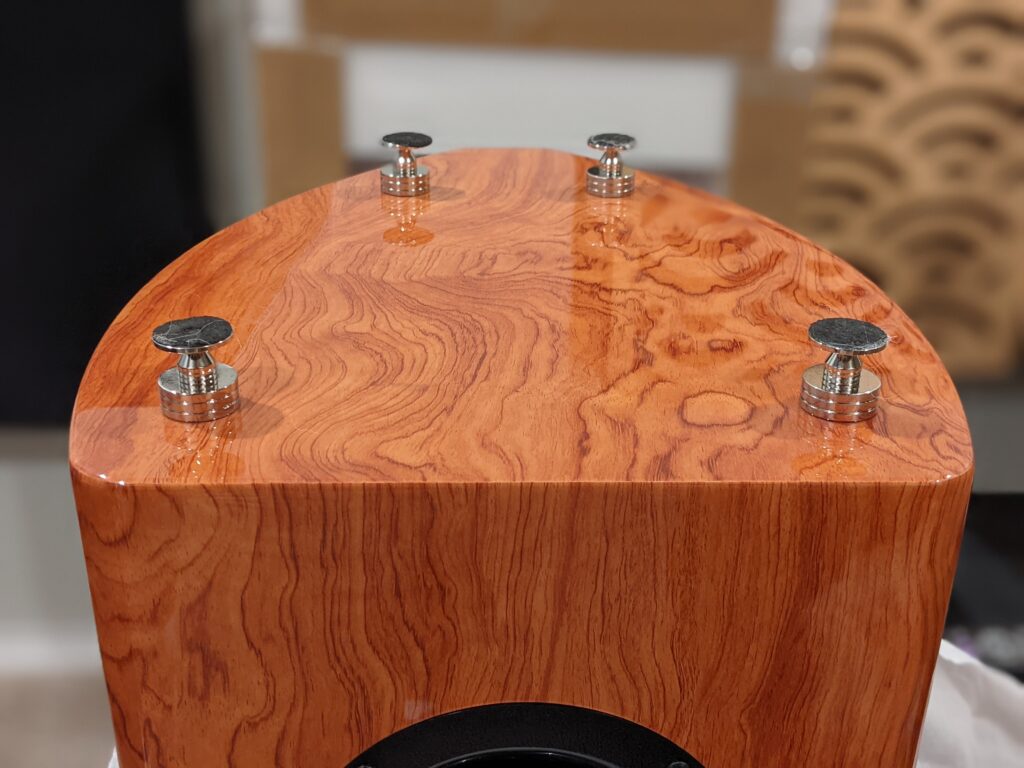
As we turn our attention to the published specifications, it should (again) come as no surprise that Dennis designed the frequency response to be as flat and natural as possible while maintaining great response off axis. This is great, as it means the speaker should be relatively unaffected by the room. Relatively, that is. They are rated for 25 Hz – 20kHz (+ 1.5 / – 3db) in a semi-anechoic room. This is important, as it means in-room response should see even deeper bass response.
Though the sensitivity sits a low 86 dB (2.83v/1M) with a nominal 6 ohm impedance, I would like to note that I’ve found the speaker rather easy to drive. I never ran into issues with my 26 watt Triode Lab EL84 monoblocks or the Audial Model A which outputs a modest 25 watts into 8 ohms. In fact both of these amplifiers were among my favorites compared to my standard reference Rega Osiris. But more on that later.
Weighing in at 72lb each, these towers are definitely the heaviest towers to grace my listening room. I would not recommend moving these by yourself.
System Notes and Setup
For the greater duration of my time with the BMR Towers, they were setup in my dedicated media room that I recently wrote about. Prior to the media room’s completion, I also had them in my living room I also had them in my living room which allowed me a different take on the speakers.
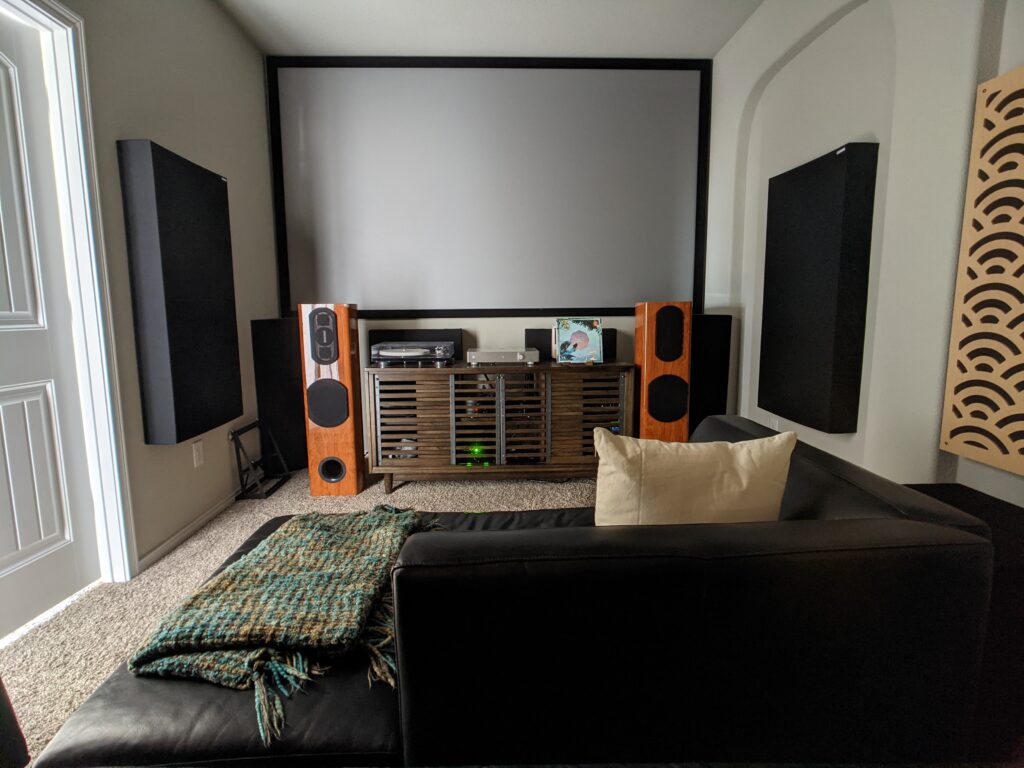
Before moving on to my impressions, let’s do a quick run through of the components used. For the majority of my testing, I used my trusty Rega Osiris as it’s the amplifier I’m most familiar with, for whatever that’s worth. While in the living room, I used the Audial Model A, which has been a fan favorite here in the household recently, having earned a full-time spot in that room.
On the digital front, I’m using the new Audial S5 driven by a Raspberry Pi via USB running Roon. Between the S5 and Osiris are the most generic XLR cables I could find on Amazon. But hey, they’re braided in red to match the Rega color scheme, so that’s gotta count for something.
Circling back around to the analog side, I am (still) using the Rega RP10. It has been with me since early 2014 and I don’t see that changing in the near future. It’s feeding a Rega Aria MKI phonostage. I’ve brought this up a few times, but the phono stage is a component I’ve considered replacing soon. But as with all things in this world, it comes down to money.
Music, Music, Music
If it’s not completely evident by now, I rotate through a somewhat static list of artists, albums, and tracks for my music section. I’ll occasionally bring in something new as I find new music, but I tend to prefer tracks that I’m intimately familiar with. I think this makes reviews more fair and comparable, but maybe that’s just me.
I’m going to try something new here and link the albums from Qobuz, as it’s my service of choice for no other reason than it was cheaper than the competition. Yep, moving on.

The first artist I’d like to talk about is Abraham Alexander. My discovery of him wasn’t as organic as some of my other artists. He was opening for Leon Bridges and the tonality of his voice and soul in his lyrics had me hooked instantly. He has a single self-titled EP that is a regular on my playlist these days.
The first track, “Lovers Game”, quickly introduces the listener to what the rest of the EP will be like. In particular here against other speakers in my collection, the BMR Towers do a tremendous job of keeping all parts cleanly separated. It was easy for me to get lost on the bass line, the vocals, the drums, and forget that I had to take notes.
“Stay”, the second track, is among my all-time favorites. I’m not sure if it’s because the lyrics hit deep, Abraham’s voice, or a combination thereof, but I almost always tear up a bit when this comes on. The BMR Tower’s were no exception here, even giving me goose bumps from beginning to end. I’m not sure about other listeners, but that’s a sure sign of audial perfection in my book.
The rest of the album continues this trend, but with a bit more energy than the first two tracks.

Next up is The Mountain Will Fall by DJ Shadow. This is perhaps a dark horse pick for me and a rather unconventional one at that. It’s not my normal style of music, but sometimes it just hits right. The first track is an instrumental opener, but it has everything it takes to let you know immediately if a system is truly full range. I’ll be honest that this ranks up there with The XX’s track Intro in my book. But instead of a beat to jam to, DJ Shadow treats us to deep bass that almost assuredly would be lost on lesser speakers without augmentation below. For the BMR Towers, this wasn’t the case. Not once did I notice any hesitation or compression during my session with this album.
The “real” opening track (with vocals) is the most well known from the album in my opinion. And rightfully so, because it’s truly a track that can get stuck in your head. It’s catchy. And for those that haven’t seen the music video, I highly recommend it. A word of warning, it’s not kid friendly. Something that I noticed with the Towers that made it stand apart from all but the best speakers was its ability to layer music from front to back. On lesser speakers, the vocals don’t stand out as being front and center. But that’s not the case here. It’s easy for the vocals to get lost otherwise.
Skipping ahead to Bergschrund, we’re yet again faced with a voice-less track. But this one brings something else to the table that the previous ones missed. A soundstage that bounces left to right, front to back, and from the floor to ceiling if I close my eyes hard enough.
With some types of music, you can get away without having a full-range system. In that style of music, I wouldn’t say the BMR Towers are any better or worse than the high-end monitors that may compete against it. But, we’re talking full-range here. It’s not often that you hear a speaker that is otherwise completely happy without that extra augmentation.

I want to round out my music selection with an old favorite, Swing Lo Magellan by Dirty Projectors. I’m not going to say I forgot about this album, but with the amount of new music I’ve been discovering lately, sometimes it takes a while to work my way back to the favorites.
While not the first track, I’d like to talk about “About to Die” first. Upon hearing this track again, I was instantly reminded why I loved this album. The mastering is great and the soundstage is nigh second to none. It speaks volumes about the BMR Towers that they can bring back those memories within seconds. They’re so incredibly clean that it would be hard for anyone to listen to anything else in a critical manner without feeling like something is missing.
Onto my favorite track, “The Gun Has No Trigger”, the Towers demonstrate their ability to show restraint when reproducing not only the female background vocals, but also the bass line. I think the latter walks a fine line between too much and not enough. Some speakers will emphasize this, to the point of being bloated, while others will make you yearn for a subwoofer. I believe Dennis’s BMR Tower is one of the few loudspeakers I’ve heard that treads that line so convincingly.
What about those Tubes?
Before moving on, I’d like to take a moment to talk about how vacuum tubes pair up with the BMR Towers. It’ll be short and sweet, but I can’t talk about speakers without hooking up some tubes.
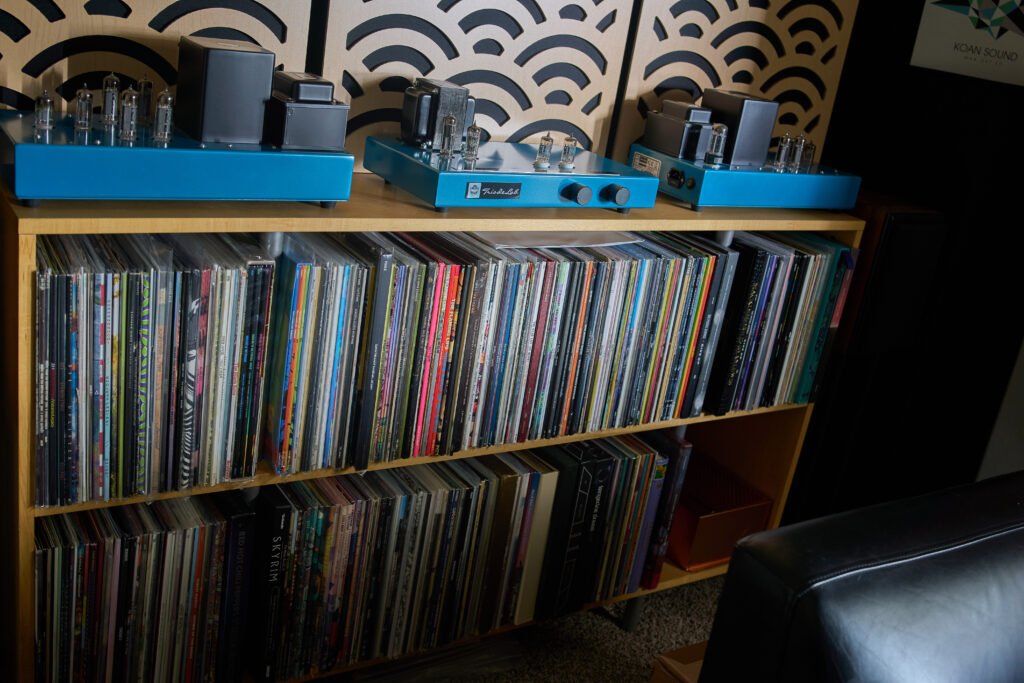
Though they weren’t my primary source of amplification, I did use my reference Triode Lab EL84M-FFX monoblocks for some time. Despite the Tower’s low’ish sensitivity rating, my 26 watt tube amps were able to drive them without issue. Even as I turned things up, never once did I hear compression or distortion that I typically associate with pushing vacuum tubes too hard. In fact, I would say this combination brought me the most joy when listening to my typical style of music as noted in the previous section.
The only reason these amps don’t make the system permanently is that the room they’re in is also used for movies. And while they’re great for music, I would rather use my solid state amplification for movies.
We care about measurements, right?
Now that my personal thoughts are out of the way, let’s get to measurements.
I purchased a MiniDSP UMIK-2 specifically for the purpose of taking measurements and trying to better understand how my room affects the frequency response of a speaker. I’m hoping to write something up about that at some point.
While not the most comprehensive set of measurements, I believe this still helps provide a mental model of how a speaker may perform.
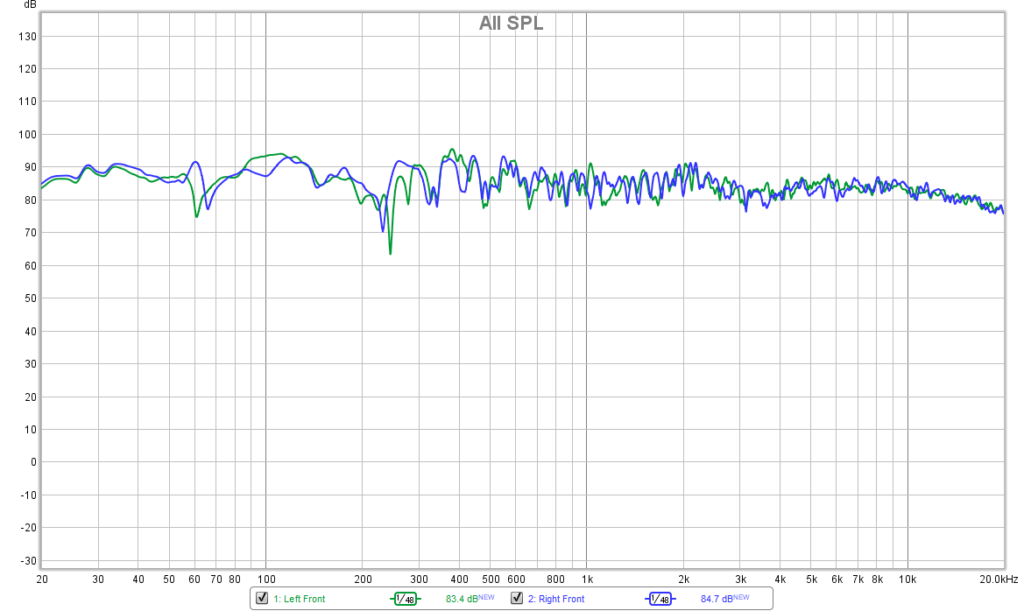
Let’s talk about how these measurements align with my listening notes.
The microphone was close to where I sit, but not exactly. The dip at between 200-300 Hz is noticeable, but not to the degree shown in the graph. If I had to guess, it only sounds a couple dB down instead of a very severe 10-20.
Though it’d be dubious to trust bass measurements, I can definitely attest that these speakers move serious air when called upon.
As for mids and highs. You can’t really tell that from a simple response graph, but they’re non-fatiguing and accurate. Not accurate in the “they play the right note” kind of way, but rather when it comes to decay and imaging. The tiny BMR units are among the best.
Closing Thoughts
I’ll make this short and sweet. Did I enjoy my time with these speakers? Very much yes. Are they the perfect speaker? No, but at the asking price, they don’t have to be.
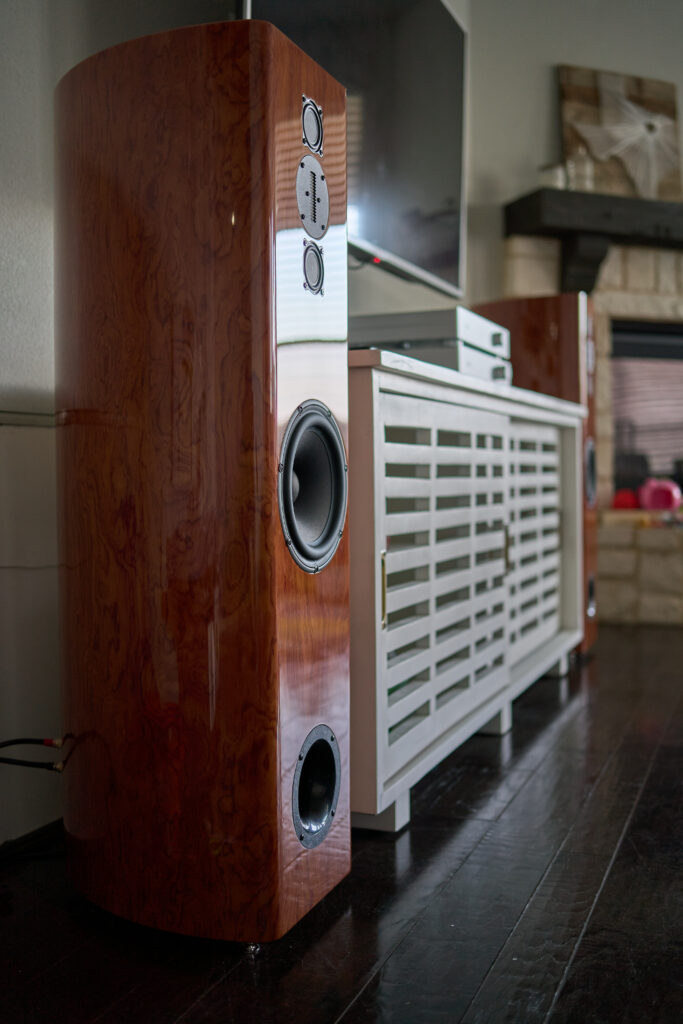
Philharmonic Audio has a lot of great things going for their newest (and hottest) BMR Tower. They go high and low. They project a very solid soundstage, and they look the part. I think it now comes down to a few final questions, ending with the traditional “are they worth it for you?”. Ultimately, I can’t decide that, but I can offer my opinion.
To get this level of performance in a floor-standing option from a traditional manufacturer will easily run you twice the moolah. For the same cost as the Towers, you can get monitors with a pair of subwoofers that blow the bass performance of the towers out of the water. That said, I myself have always tended towards the “complete package” and have preferred towers for their more full-range ability.
In a future model, I would like to see the option for a different tweeter. The RAAL is great, but it gets fatiguing for me after a while. The only other nitpick I really have are the spikes. If I had kept the speakers, I would have manufactured outriggers to guarantee the stability, especially since I have kids who like to run around.
Those minor complaints aside, Philharmonic Audio has truly outdone themselves by releasing a speaker that goes toe-to-toe with competition costing 2-3x as much.
Bravo

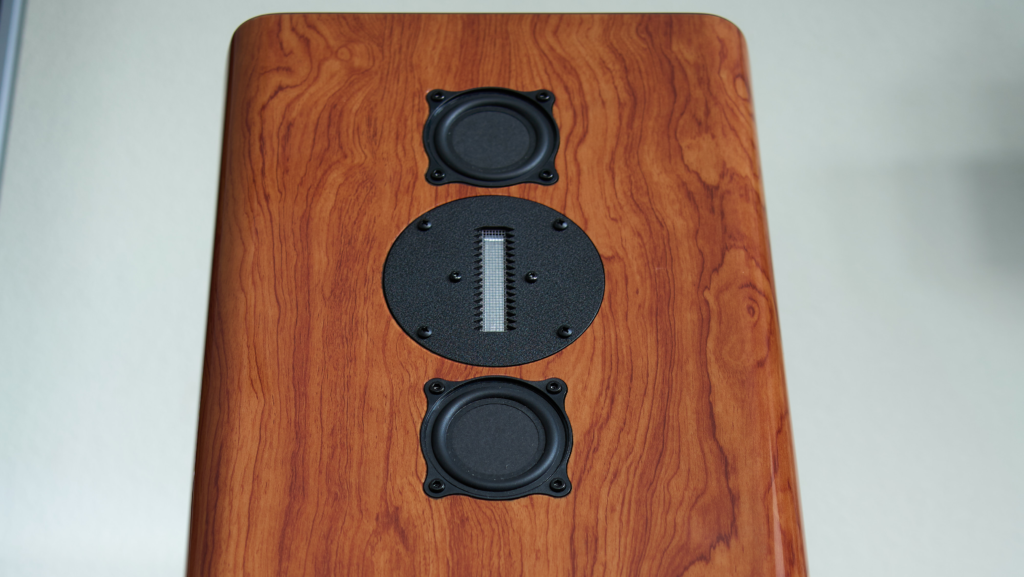
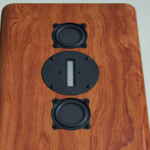
The RAAL tweeters are the least fatiguing tweeters I have ever heard in my entire life.